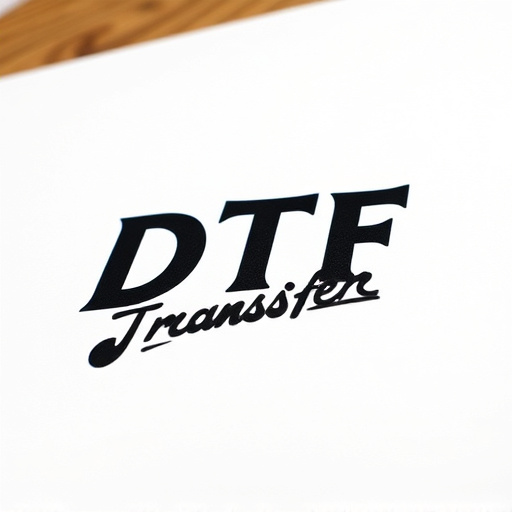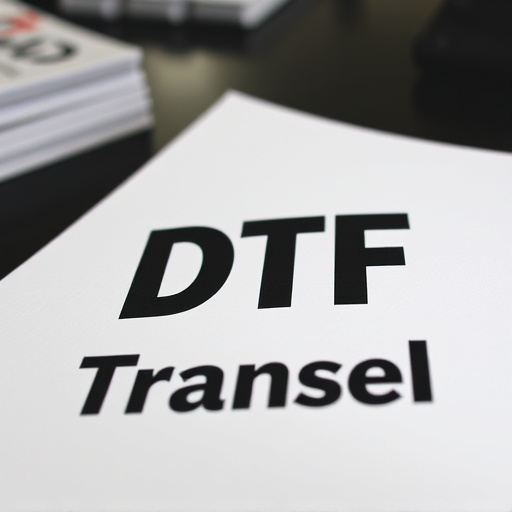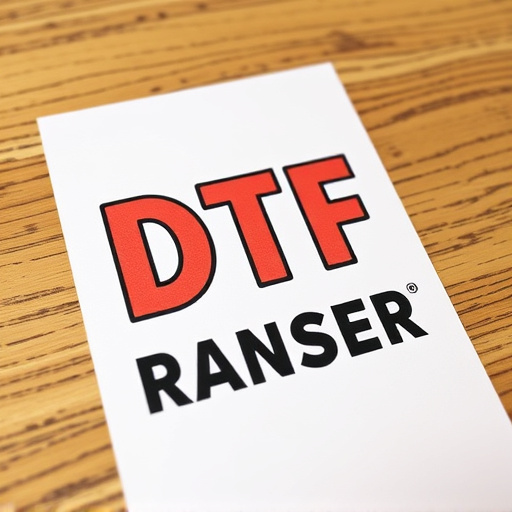Efficient Carrier Film Removal Techniques for Enhanced DTF Transfer Quality
Carrier film plays a critical role in Direct-to-Film (DTF) transfer printing, protecting designs dur…….
Welcome to an in-depth exploration of DTF (Dry Treating Fluid) peeling methods, a cutting-edge technique revolutionizing various industries’ surface treatment processes. This article aims to guide readers through the intricacies of DTF peeling, its global impact, and the many considerations that shape its application. By the end, you will grasp the significance of this method in enhancing material properties, improving product quality, and driving innovation across sectors.
Definition: DTF peeling methods are advanced surface treatment techniques employed to modify and enhance the characteristics of materials without direct contact with corrosive substances or wet environments. This process involves the controlled application of dry, powdered compounds to achieve specific surface modifications, such as cleaning, smoothing, or texturizing.
Core Components:
Historical Context: DTF peeling methods have evolved over several decades, building upon traditional wet chemical etching techniques. Early developments focused on improving surface cleanliness and precision in the electronics industry. Over time, advancements in material science and particle technology led to a broader range of applications, including automotive, aerospace, and construction sectors.
Significance: DTF peeling offers several advantages over conventional methods:
DTF peeling methods have made a significant global impact, with varying adoption rates across regions. The following trends shape its current and future trajectory:
| Region | Adoption Rate | Key Drivers | Notable Applications |
|---|---|---|---|
| North America | High | Advanced manufacturing, automotive industry innovations | Automotive parts, electronics components |
| Europe | Moderate-High | Strict environmental regulations, focus on sustainable practices | Aerospace components, construction materials |
| Asia Pacific | Leading | Rapid industrialization, growing demand for precision surface treatments | Consumer electronics, semiconductor devices, advanced textiles |
| Middle East & Africa | Rising | Infrastructure development, adoption of modern technologies | Oil and gas equipment, architectural surfaces |
| South America | Moderate | Local manufacturing sectors, government initiatives | Automotive and aerospace components, local product enhancement |
Key Trends:
The economic landscape surrounding DTF peeling methods is dynamic and multifaceted, influenced by market forces, investment trends, and industry-specific requirements.
Market Dynamics:
Investment Patterns:
Industry-Specific Economic Impact:
DTF peeling methods find diverse applications across various industries, each with unique requirements and benefits.
Automotive:
Aerospace:
Construction and Architecture:
Electronics and Semiconductors:
Implementing successful DTF peeling methods requires careful consideration of various technical aspects.
Material Selection: Choosing the right DTF composition is vital. Factors include the target material, desired surface modification, and environmental conditions. Specialized materials are available for specific applications, such as highly abrasive surfaces or delicate materials.
Application Techniques: Different application methods yield distinct results. For example, brushing provides controlled abrasion, while blasting offers higher intensity. Spraying techniques allow for even distribution but may require additional control measures to prevent over-treating.
Process Parameters:
Quality Control and Monitoring: Real-time monitoring ensures consistent peeling quality. Techniques include optical sensors, pressure transducers, and advanced imaging systems to assess treatment intensity and surface conditions.
While DTF peeling methods offer numerous advantages, challenges remain that drive future research and innovation.
Challenges:
Future Prospects:
In conclusion, DTF peeling methods offer a versatile and powerful approach to surface modification across numerous industries. With ongoing research and technological advancements, these techniques are poised to play an increasingly significant role in shaping the future of manufacturing, enabling more efficient, aesthetically pleasing, and environmentally conscious products.

Carrier film plays a critical role in Direct-to-Film (DTF) transfer printing, protecting designs dur…….

Direct-To-Film (DTF) transfer printing revolutionizes design with high-quality intricate patterns. A…….

This text delves into the intricate process of removing carrier film after a Direct-to-Film (DTF) tr…….

The Direct-to-Film (DTF) transfer process offers precise, high-quality printing on diverse materials…….

Carrier film plays a vital role in DTF printing, protecting and securing prints until heat activatio…….

In Direct-to-Film (DTF) printing, carrier film protection is crucial but its removal poses a challen…….

The removal of carrier film is a critical step in achieving high-quality DTF (Direct to Film) prints…….

Carrier film, essential in Direct-to-Film (DTF) printing, safeguards intricate prints during transfe…….

Direct to Film (DTF) transfers offer high-quality printing on textiles and surfaces using special in…….

Carrier film, a critical component in Direct to Fabric (DTF) transfers, protects fabric during print…….